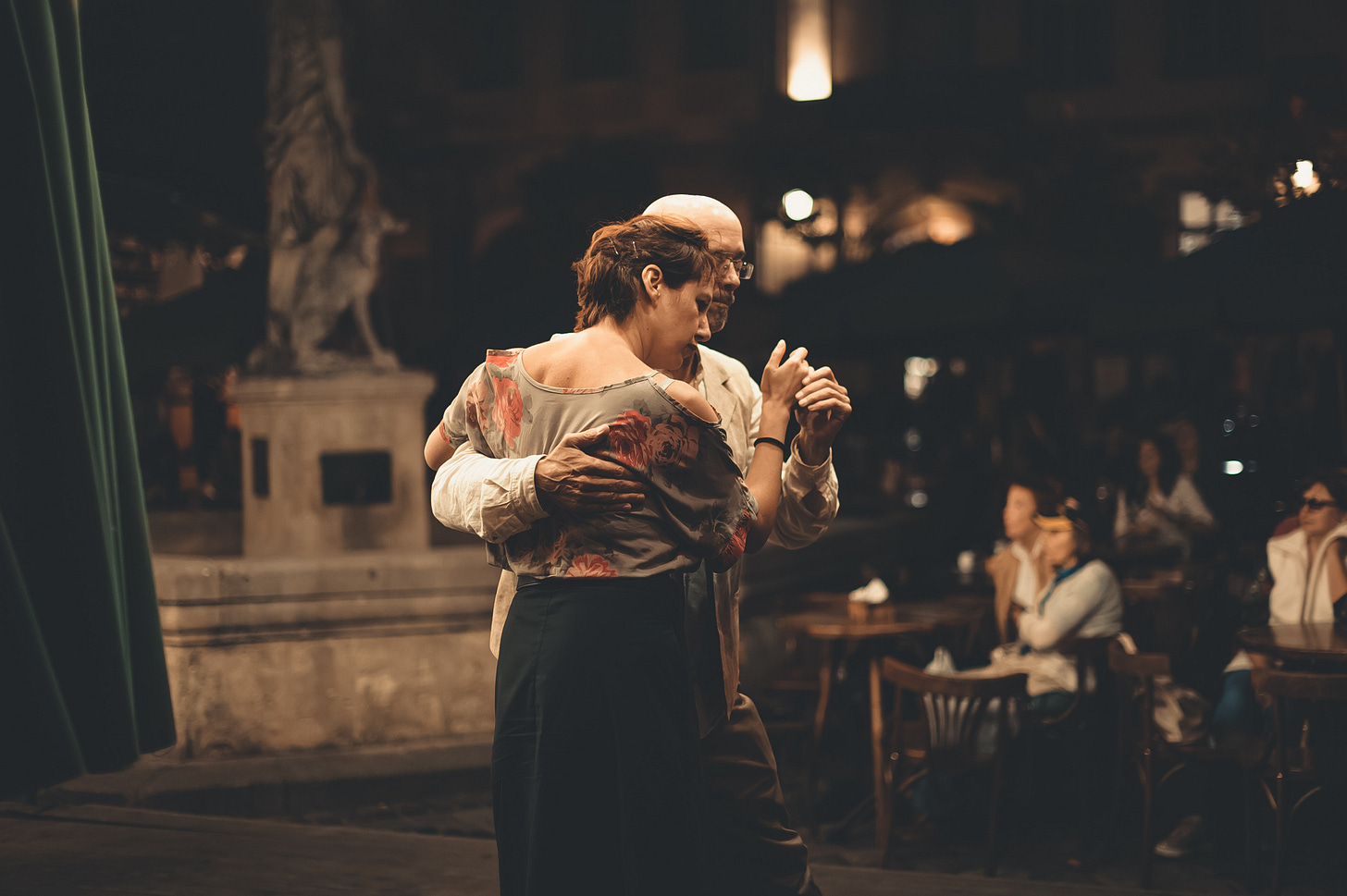Photo by Maksym Kaharlytskyi on Unsplash
When people dance at clubs and concerts, they are mainly moving to the music individually, repeating certain moves with arms and hands and hips and feet, inspired by the beat and the pulsing presence of others. It feels so natural. People can dance like this for hours and hours. Sometimes the experience can be more structured, as in Ecstatic Dance, where the dancers are taken on a rising journey and let down softly—at least with a good d.j., such as my son Alxndr.
At best, freeform dancing creates a temporary community of revelers or worshippers; at worst, each dancer feels solipsistic and self-conscious.
Partner dancing is completely different. For one thing, when you’re dancing in a couple, whether it’s swing dancing or waltzing, doing the tango or doing the Zydeco, there are specific rules to follow. It takes a little concentration to learn the basic steps of each dance, but the half-hour lesson held before many dances gives one a good start. After that, it’s important to dance with better dancers: As in sports, they will lift your game.
Apparently, partner dancing is especially important for cognitive health in the aging. Some studies indicate it’s the number one recommended activity for staving off mental decline. Of course, dancing is exercise. In addition, learning new dances and steps improves memory, while following or leading new partners improves social skills.
That’s why partner dancing in particular is recommended, rather than just moving about any old way, often in place, on the dance floor.
To me, it feels easier and better to master certain steps than to produce my own movements. Paradoxically, it feels freer to adhere to the rules of a dance than to “spontaneously” move about any which way.
Partner dancing, whether to a Cajun band or a country singer, requires a basic knowledge of the steps, but there are certain “breaks” that are common to much dance music. Whether a Western Swing dancer or a Zydeco dancer is throwing the woman away from him, she will go out and come back in much the same way, unless he is holding his arm up, in which case she’ll go under it. And there are thousands of tangos to dance to; thousands of waltzes to play.
An Aside: Israeli Folk Dancing
This is in sharp contrast to Israeli folk dancing, where every song has its own dance! When Mark and I decided to take an introductory class in Israeli folk dancing, the teacher warned us it would be difficult. We knew no Hebrew and these songs were not part of our childhood. Indeed, only one of us is Jewish. Of course, the more the teacher discouraged us, the more we wanted to be in his class. Finally, he relented.
At first, all went well. I was smitten by the beauty of these folksongs and the solemn motions that accompanied them. It was mostly group dancing, usually in a circle. Sometimes we went to the middle of the circle, our joined hands held high.
By about the sixth dance, Mark and I were in trouble. To us, all the beautiful Hebrew songs, always in a minor key, began sounding alike. The steps from one dance began entering another. It was so marvelous to dance in unison with the others. . . and it was so rare!
Covid allowed us to drop the class without shame. Anyway, it wasn’t couples dancing.
Shall We Dance?
It’s a pity that the man still asks the woman to dance at most of the dances I go to. Apart from the disempowering practice of “gentleman’s choice,” these dances are a lot of fun. I love dancing with strangers, getting used to their dance style, possibly exchanging first names but usually not.
A bandleader I know says a dance is a “three-minute love affair.” I wouldn’t go that far, but it’s certainly true that partner dancing is inherently romantic. When you’re physically close, you get to smell their necks and touch their hands. Getting in rhythm together becomes a shared triumph leading to shared smiles and a feeling of closeness.
Sometimes the love affair lasts longer than three minutes. Three weeks after my first husband left me for another woman, I went to a Zydeco dance near my house. I took the lesson in advance, and later on, I admired a good dancer in a green tank top. He had beautiful, sculpted arms. I hoped he’d ask me to dance, and to my surprise he did.
Thirty years later, Mark and I are still dancing.





Lovely. When was this? Is The Rusty Nail still there . . . and can we go?
Yes, darling!